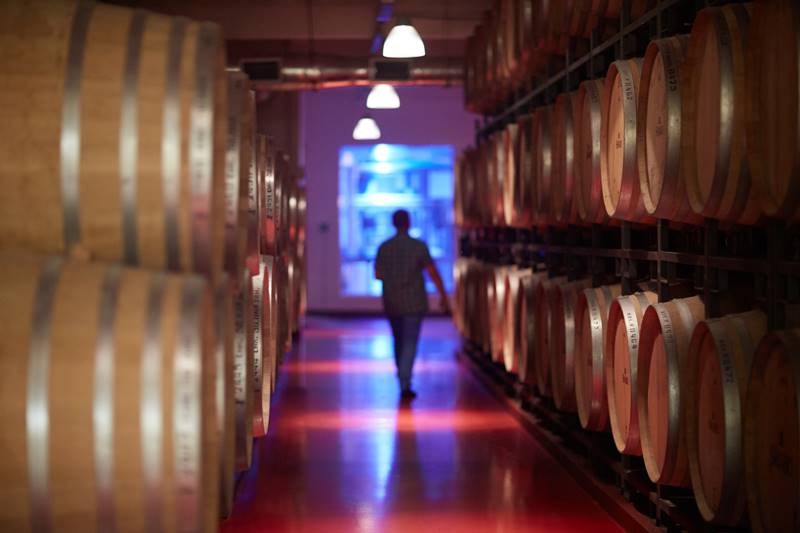Wine Production Plummets 10% in 2023
Wine Production Plummets: Global Output Sees Steepest Drop in Decades
2024-06-07

The wine world witnessed significant changes in 2023, as various dynamics shaped the industry from vineyard to glass. Let's dive into the latest figures on consumption, exports, production, and vineyard area, and explore what these numbers tell us about the current state of the global wine market.
In 2023, the global wine trade faced a notable dip, with the volume of wine traded internationally reaching 9.838 billion liters. This represents a 6.5% decrease compared to the previous year. Correspondingly, the value of global wine sales also saw a reduction, dropping by 4.7% to $38.9 billion.
This decline in trade volume and value suggests a variety of potential factors at play. Economic uncertainty, shifts in consumer preferences, and challenges in supply chains might all contribute to these trends. The good news, however, lies in the average price per liter, which saw a slight increase of 1.9%, reaching $3.95. This indicates that despite lower volumes, wine producers are managing to maintain, or even slightly increase, their revenue per unit sold.
A Decrease in Global Wine Consumption
Global wine consumption also showed a downturn, falling by 2.6% to 221 million hectoliters. This decrease in consumption could be linked to changing lifestyles and drinking habits, with many consumers becoming more health-conscious or opting for other beverages. Additionally, the lingering effects of the COVID-19 pandemic might still be influencing social drinking behaviors and hospitality industries worldwide.
Vineyard Area: A Minor Shrinkage
The total area dedicated to vineyards worldwide experienced a marginal decrease, shrinking by 0.2% to 7.2 million hectares. While this might seem negligible, it reflects broader trends in land use and agricultural priorities. Some regions might be reallocating land for other crops or purposes, and climate change impacts could also be affecting vineyard areas.
A Significant Drop in Wine Production
One of the most striking statistics from 2023 is the 10% drop in wine production, which fell to 237 million hectoliters. This substantial decrease can be attributed to several factors, including adverse weather conditions in key wine-producing regions, such as droughts and unseasonal frosts. Additionally, ongoing challenges like labor shortages and increased production costs could be contributing to lower output.
What Do These Numbers Mean for the Wine Industry?
The figures from 2023 paint a complex picture of the global wine industry. While there are areas of concern, such as declining trade volumes and consumption, there are also positive signs, like the increase in the average price per liter.
For wine producers, these trends highlight the importance of adaptability and resilience. Investing in sustainable practices, exploring new markets, and embracing technological innovations can help navigate these challenging times. For consumers, the slight increase in prices might be offset by an expectation of higher quality and more diverse wine offerings.
Moreover, the ongoing impact of climate change cannot be overlooked. The significant drop in production underscores the need for the industry to address environmental challenges proactively. This could involve more robust strategies for water management, soil health, and the development of grape varieties that are more resilient to changing climatic conditions.
As we move forward, the global wine industry will need to continue evolving in response to these trends. Stakeholders across the supply chain, from vineyard owners to retailers, must stay informed and adaptable. Embracing sustainability, fostering innovation, and understanding consumer preferences will be key to navigating the dynamic landscape of the wine world.
In summary, 2023 was a year of significant shifts for the global wine industry. While there were notable declines in trade, consumption, and production, there were also opportunities to enhance value and quality. The journey ahead will undoubtedly be complex, but with careful strategy and a commitment to excellence, the future of wine remains promising.
Founded in 2007, Vinetur® is a registered trademark of VGSC S.L. with a long history in the wine industry.
VGSC, S.L. with VAT number B70255591 is a spanish company legally registered in the Commercial Register of the city of Santiago de Compostela, with registration number: Bulletin 181, Reference 356049 in Volume 13, Page 107, Section 6, Sheet 45028, Entry 2.
Email: [email protected]
Headquarters and offices located in Vilagarcia de Arousa, Spain.